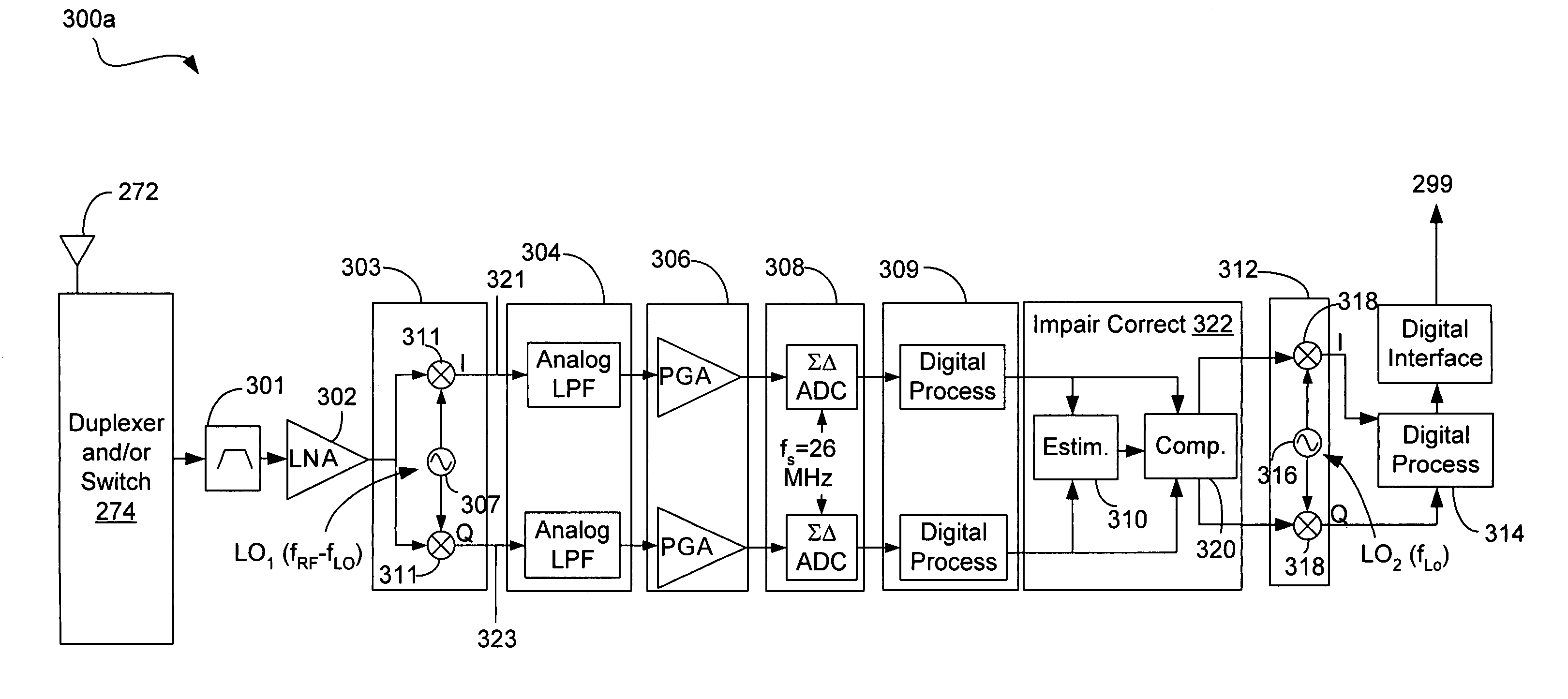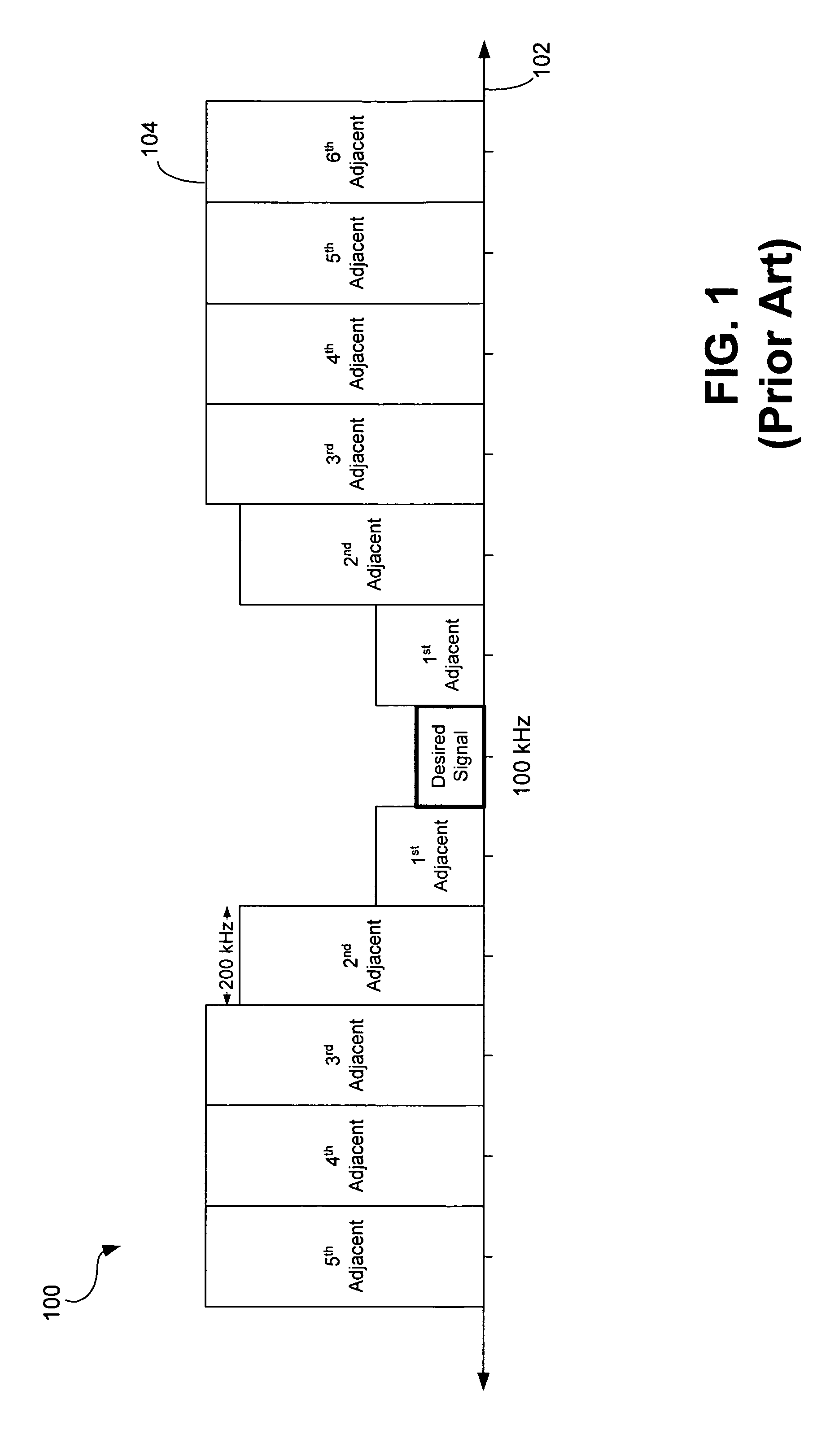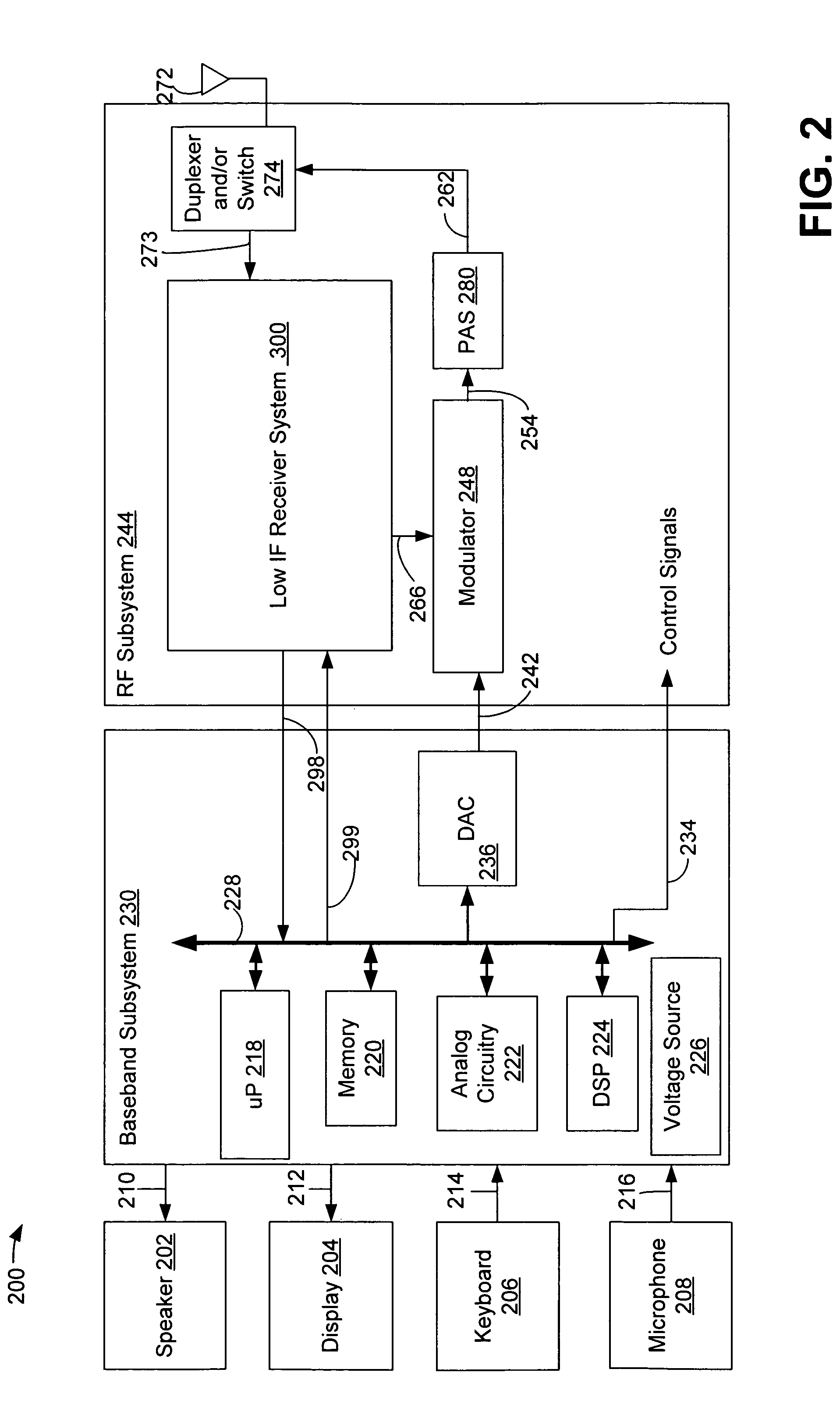Low IF receiver systems and methods
a receiver and low-intermediate frequency technology, applied in the field of radio receivers, can solve the problems of degrading the performance of portable transceivers, fundamental limitations of edge systems in particular and digital communications in general, and traditional non-practical use of dcr systems
- Summary
- Abstract
- Description
- Claims
- Application Information
AI Technical Summary
Problems solved by technology
Method used
Image
Examples
Embodiment Construction
[0021]Embodiments of a low intermediate frequency (IF) receiver system and related methods are disclosed. In one embodiment, a low IF receiver system mitigates interfering energy from adjacent channels by reducing the level of radio frequency (RF) impairments due to imbalances in gain and / or phase. The in-band interference energy that is caused by RF impairments is proportional to the product of the RF impairments and the energy associated with one or more adjacent channel interferers. As the energy of an adjacent channel interferer increases, the impairments need to decrease to maintain the same level of in-band interference. A low IF receiver system is disclosed that digitally estimates the impairments and corrects or compensates for these impairments in the digital domain.
[0022]Although a low IF receiver system that estimates and compensates for the RF impairments may reduce the effective level of the RF impairments, some portion of the adjacent channel interferer may still fall ...
PUM
 Login to View More
Login to View More Abstract
Description
Claims
Application Information
 Login to View More
Login to View More - R&D
- Intellectual Property
- Life Sciences
- Materials
- Tech Scout
- Unparalleled Data Quality
- Higher Quality Content
- 60% Fewer Hallucinations
Browse by: Latest US Patents, China's latest patents, Technical Efficacy Thesaurus, Application Domain, Technology Topic, Popular Technical Reports.
© 2025 PatSnap. All rights reserved.Legal|Privacy policy|Modern Slavery Act Transparency Statement|Sitemap|About US| Contact US: help@patsnap.com



